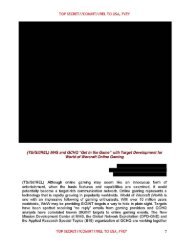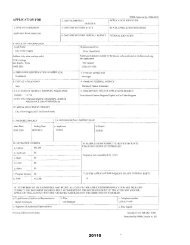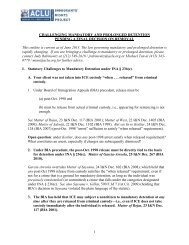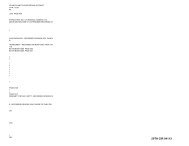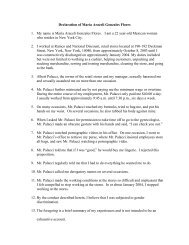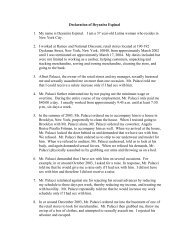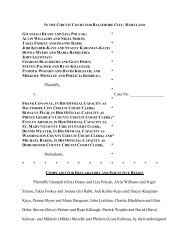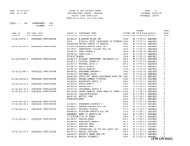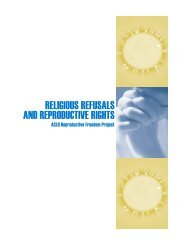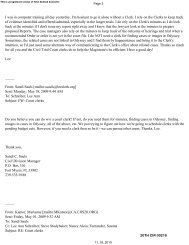NO. AP-75,363 IN THE COURT OF CRIMINAL APPEALS OF TEXAS ...
NO. AP-75,363 IN THE COURT OF CRIMINAL APPEALS OF TEXAS ...
NO. AP-75,363 IN THE COURT OF CRIMINAL APPEALS OF TEXAS ...
You also want an ePaper? Increase the reach of your titles
YUMPU automatically turns print PDFs into web optimized ePapers that Google loves.
13<br />
Defense Exhibit 58). See also Defense Exhibit 71 (article including composite)). The<br />
14<br />
court blocked all defense attempts to introduce this evidence. Capitalizing on the court’s<br />
ruling, the prosecution misleadingly argued in summation that the only way Soffar could<br />
have known certain details was if he were responsible for the crime. (35 RR 11, 22-23).<br />
Looking for a Reward, Max Soffar Becomes a Suspect<br />
Jackie Soffar Butler, Max Soffar’s sister, learned about the bowling alley murders<br />
around the first of August, 1980, from her brother, Max, as they were driving to the<br />
doctor’s office together. (32 RR 236). Soffar told her there was a cash reward and that the<br />
composite looked a lot like his friend Latt Bloomfield. Id. Soffar said he wanted to turn<br />
in Bloomfield. (32 RR 236-37).<br />
Although Ms. Butler did not live at home with her parents and her brother, Max,<br />
she was a frequent visitor. (32 RR 238). The Soffar family typically watched Channel 13<br />
News (32 RR 239), and her parents subscribed to the Houston Post. Id.<br />
On August 5, 1980, Soffar was arrested after stealing a motorcycle in League City<br />
and providing a false name to the police. (29 RR 22, 25). Soffar told his arresting officer<br />
that he had information about the widely-publicized bowling alley murders in Houston.<br />
(29 RR 31). He said he wanted to speak with a Sergeant Clawson, which the arresting<br />
13<br />
Several stories explained where the building was situated in the parking lot and the location of the front doors.<br />
(43 RR Defense Exhibit 60).<br />
14<br />
Over defense objections based on Max Soffar’s Sixth Amendment right to present a defense, the court also<br />
precluded cross examination of interrogating officers regarding these details and introduction of evidence that any of<br />
these stories appeared in the media. (30 RR 101-06; 33 RR 4-5). The defense theory of admissibility of the media<br />
evidence was that the information in Max Soffar putative confession reflected nothing more than information<br />
broadcast to the general public. Id. See also (31 RR 4-8).<br />
8



